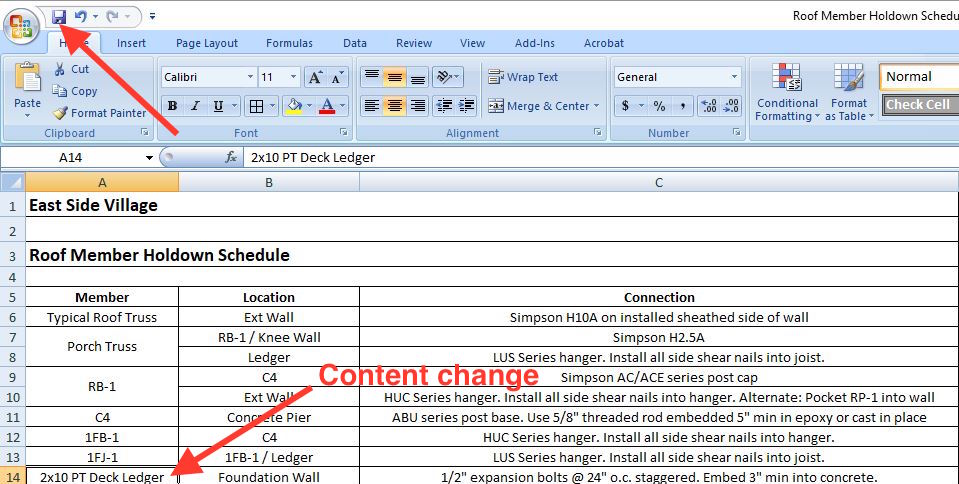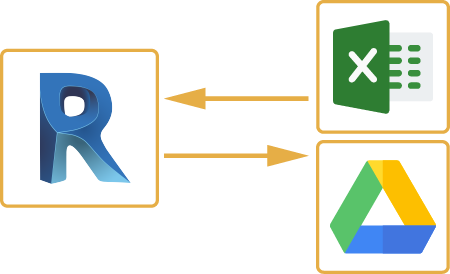Import Excel into Revit Seamlessly: A How-To Guide
Wiki Article
Revit Accelerator: Excel Integration Strategies for Enhancing Efficiency and Partnership
In this article, we will explore the benefits of integrating Excel right into your Revit operations. Plus, we will share ideal practices for flawlessly integrating Excel right into your Revit tasks. Obtain prepared to supercharge your Revit experience with our Revit Accelerator: Excel Combination Techniques!Benefits of Excel Combination in Revit
The advantages of Excel combination in Revit are numerous and can greatly improve productivity and cooperation. By seamlessly linking these 2 powerful tools, you can improve your workflow and save useful time. With Excel integration, you can easily import and export data in between Revit and Excel, enabling you to leverage the staminas of both programs.
One more advantage of Excel assimilation is the capacity to create dynamic timetables and reports. By linking your Revit design to an Excel spread sheet, any kind of adjustments made in Revit will automatically upgrade in the matching Excel data. This makes it simple to generate updated routines, amount departures, and various other task documentation.
Excel integration in Revit also enables better partnership among staff member. With the capability to import and export data, you can easily share info with colleagues that may not have access to Revit. This promotes efficient communication and enables far better control and decision-making.
Streamlining Operations With Revit and Excel
Simplifying process with Revit and Excel can substantially enhance effectiveness and cooperation. By integrating these two powerful devices, you can maximize your design process and enhance interaction within your group. With Revit, you can create 3D models and produce comprehensive building and engineering documents. Nevertheless, when it comes to data management and analysis, Excel is the best software. By incorporating the capabilities of Revit and Excel, you can seamlessly transfer data between the two applications, removing the demand for manual information access and decreasing the danger of mistakes.
Utilizing Revit and Excel together allows you to leverage the toughness of each program - revit tools. You can export data from Revit into Excel, where you can execute intricate computations, produce charts and charts, and examine the info in a more organized and reliable way. On the other hand, you can import information from Excel into Revit, enabling you to promptly update your versions and documents based upon changes made in Excel
The assimilation of Revit and Excel likewise promotes cooperation among staff member. By sharing Excel data, you can easily collaborate and interact on style and construction-related data. This boosts coordination and ensures that everyone is functioning with one of the most updated details.
Making The Most Of Collaboration With Excel and Revit
To maximize collaboration with Excel and Revit, you can effortlessly update and share design and construction-related data with your team. With simply a couple of clicks, you can import Excel spread sheets into your Revit design, allowing you to easily access and control the data.One of the essential advantages of using Excel in conjunction with Revit is the ability to upgrade information in both programs at the same time. Any type of adjustments made in Excel will instantly be mirrored in Revit, and vice versa. This ensures that everybody is collaborating with one of the most updated details, preventing complication and saving valuable time.
Furthermore, Excel offers powerful devices for evaluating and arranging data, which can substantially enhance your collaboration initiatives. You can create personalized reports and charts in Excel, helping you to envision and connect crucial job info successfully. When offering data to stakeholders or making notified choices based on job metrics (revit tools)., this can be especially helpful.
Advanced Methods for Boosting Productivity in Revit Using Excel
By using innovative methods in Revit, you can significantly raise your productivity by leveraging the power of Excel. One of the key strategies for boosting productivity is by making use of Excel as a data administration tool. With Revit's Excel assimilation feature, you can link Excel spread sheets straight to your Revit version, enabling you to conveniently take care of and look here update data. This assimilation allows you to develop schedules, determine quantities, and execute information analysis efficiently.
Furthermore, you can use Excel macros to automate repeated tasks in Revit (revit plugins). Macros permit you to record a series of activities and play them back with a look at these guys single click, saving you effort and time. You can produce a macro to instantly create room schedules or update criterion worths in mass.
Best Practices for Excel Integration in Revit
Using Excel as an information monitoring tool in Revit allows for effective management and upgrading of information. One of the finest techniques for Excel integration in Revit is to produce a clear and organized information framework. By adhering to these best techniques, you can effectively make use of Excel as an information management device in Revit and increase your efficiency and cooperation.Verdict
To conclude, incorporating Excel with Revit can substantially improve efficiency and cooperation in the style procedure. By optimizing and streamlining workflows collaboration, teams can function a lot more efficiently and successfully. Advanced techniques, such as using Excel formulas and macros, can additionally improve productivity in Revit. Nonetheless, it is essential to comply with best techniques to make sure seamless combination and prevent any kind of prospective problems. By leveraging the power of Excel, Revit users can accomplish higher levels of productivity and partnership in their tasks.With Excel assimilation, you can quickly import and export data between Revit and Excel, allowing you to take advantage of the staminas of both programs.
One of the crucial advantages of Excel combination is the capacity to utilize Excel solutions and functions within Revit. By linking your Revit version to an Excel Find Out More spreadsheet, any changes made in Revit will automatically update in the matching Excel data. On the various other hand, you can import information from Excel into Revit, enabling you to promptly update your designs and documents based on changes made in Excel.
With Revit's Excel assimilation attribute, you can link Excel spread sheets directly to your Revit model, allowing you to conveniently handle and update information.
Report this wiki page